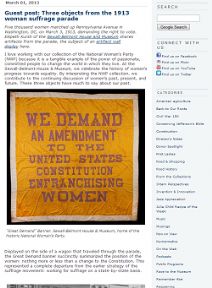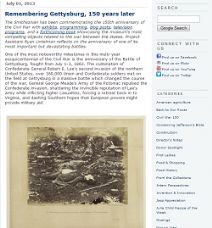As COVID-19 deaths spiked in 2020, Suzanne Firstenberg’s public art installation "In America: How could this happen…"
History Explorer Results (31)
Related Books (1)

Grade Range:
K-12
Resource Type(s):
Artifacts, Primary Sources
Date Posted:
3/5/2009
This beautiful daguerreotype by Boston-area photographer George K. Warren (1832–1884) is of the photographer's wife, Mary Ann Warren. The Photographic History Collection has a collection of letters, scrapbooks, daguerreotypes, ambrotypes, cartes-de-visites, cabinet cards, other paper prints, an

Grade Range:
4-12
Resource Type(s):
Reviewed Websites
Date Posted:
1/29/2009
For most of the twentieth century, two generations of Scurlocks documented Washington, D.C.'s African American community and city life. Portraits of a City is a web resource from the Archives Center, National Museum of American History, that preserves and provides access to the pho

Grade Range:
K-12
Resource Type(s):
Artifacts, Primary Sources
Date Posted:
1/27/2009
Family photograph albums hold the history of generations, preserving the memories of birthdays, holidays, travels, and all general aspects of life. African American Mary Taylor used her 35mm Bell and Howell camera to document her family's life in the black community of Los Angeles, California, du

Grade Range:
K-12
Resource Type(s):
Artifacts, Primary Sources
Date Posted:
11/6/2008
Photographs can be powerful connections to the past. Soldiers, for example often had their portraits made before going off to war so that loved ones would have a rememberance of them in the event they did not return. This decorative mat is unusual and suggests the pride the owner may have felt ab

Grade Range:
K-12
Resource Type(s):
Reviewed Websites
Date Posted:
10/23/2008
Discover America's favorite pastimes, sports and hobbies through the use of brief articles, images, video and audio clips, trivia questions and an interactive game entitled "Batter Up." Students will gain a unique perspective of American history by using this resource from the Library of Con

Grade Range:
K-12
Resource Type(s):
Reviewed Websites
Date Posted:
6/11/2008
Yamashita began taking pictures in 1971 while on a self-styled "roots" trip to Japan. What began as a pastime led to a career combining his two passions—photography and travel. He has been a regular contributor to the National Geographic since 1979 and has worked in such diverse locations as So

Grade Range:
4-12
Resource Type(s):
Reference Materials, Primary Sources
Date Posted:
6/10/2008
In this resource, students can explore more than 800 artifacts from the online exhibition A More Perfect Union, including: archival photography, publications, original manuscripts, works of art, and handmade objects f

Grade Range:
8-12
Resource Type(s):
Reference Materials
Duration:
5 minutes
Date Posted:
9/3/2013
In this post, readers have the chance to see and learn more about a few objects from the Sewall-Belmont House and Museum collection. The Sewall-Belmont serves as the historic home for the National Woman’s party and so has a rich connection with the history of the woman’s suffrage moveme

Grade Range:
8-12
Resource Type(s):
Reference Materials
Duration:
5 minutes
Date Posted:
8/29/2013
In this post, readers are encouraged to reflect on the historical and psychological meaning of one of the Civil War’s most stirring and most significant battles: Gettysburg. Through photographs and remembrances, readers will revisit this scene and the sacrifices made there. Writ

Grade Range:
8-12
Resource Type(s):
Reference Materials
Date Posted:
7/19/2012
In this post, students will read about the Scurlock Studio, a photographic business operated by an African American family in Washington, D.C., from 1911 to 1994. The Scurlocks maintained a long business relationship with Howard University as its official photographers. In the










